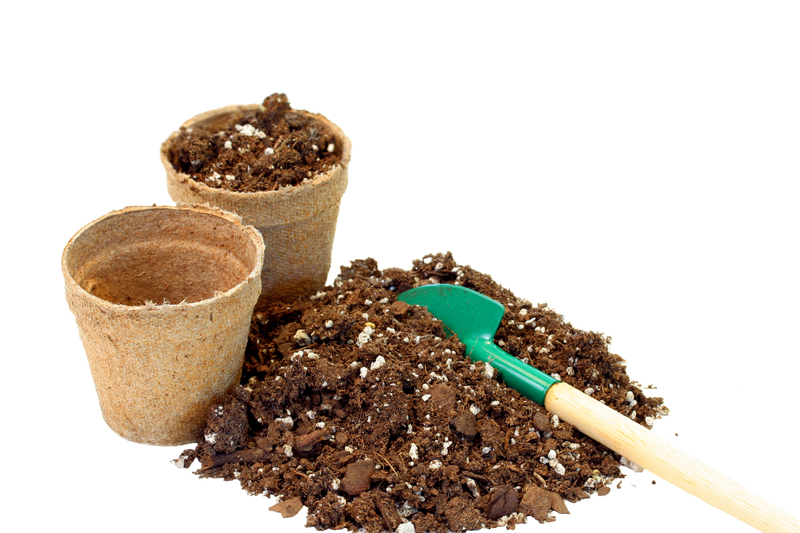Gardening Green: Climate Change and Community Impact
Posted on 21/08/2025
Gardening Green: Climate Change and Community Impact
Gardening green has become both a passion and a necessity in today's changing world. As communities across the globe experience the consequences of climate change -- from droughts and heatwaves to increased flooding and unpredictable weather -- people are looking for proactive ways to not only adapt but also make a difference. One such way is through sustainable gardening practices. In this comprehensive guide, we will explore how climate change is impacting gardening, how community green spaces can foster resilience, and actionable tips for building environmentally friendly gardens that positively influence both people and the planet.

The Interconnection: Gardening Green and Climate Change
The relationship between climate change and gardening is both complex and critical. With temperatures rising, rainfall patterns shifting, and extreme weather events becoming more frequent, the ways we garden and the plants we choose must evolve. Sustainable gardening, also referred to as climate-smart gardening or eco-friendly gardening, aims to reduce the carbon footprint of gardens and enhance their ability to cope with climate impacts.
How Does Climate Change Affect Gardens?
Understanding the specific impacts of climate change on gardens and urban green spaces is essential for adapting practices and mitigating threats. Some key effects include:
- Increased Temperatures: Warmer climates can stress traditional garden plants, alter their growing cycles, and make heat-lovers thrive where they previously could not.
- Drought and Water Scarcity: Less predictable rainfall means gardeners must be resourceful with irrigation and water conservation.
- Invasive Species and Pests: As weather patterns change, so too does the range of pests and invasive plants, which may outcompete native or cultivated varieties.
- Soil Degradation: Heavy rains, flooding, and heatwaves can hasten soil erosion, nutrient depletion, and loss of soil structure.
- Biodiversity Loss: Shifting conditions may put native species at risk and disrupt pollinator life cycles.
The Benefits of Gardening Green
Embracing green gardening practices offers numerous benefits -- not just to individual gardeners, but to the wider community and environment. Here are some key advantages:
- Carbon Sequestration: Plants capture carbon dioxide from the atmosphere, helping to offset emissions and combat global warming.
- Improved Air Quality: Gardens filter pollutants, producing cleaner, fresher air.
- Water Management: Sustainable gardens can reduce runoff, decrease flooding, and improve groundwater recharge.
- Biodiversity: Native plants attract pollinators, birds, and beneficial insects, supporting a thriving ecosystem.
- Health and Well-being: Gardening has been scientifically shown to reduce stress, boost mental health, and promote physical activity.
- Community Resilience: Shared green spaces build bonds, foster knowledge exchange, and increase food security.
Community Gardening for Climate Action
Community gardens are more than patches of green; they are hubs of education, cooperation, and innovation. In the face of climate change, community gardening offers a collaborative approach to adaptation and mitigation, as well as a means of inspiring green habits.
How Community Gardens Address Climate Change
- Local Food Production: Growing food close to home reduces transportation emissions and supports food security during supply disruptions.
- Knowledge Sharing: Community plots bring people together to share ideas, traditional wisdom, and new research about green gardening techniques.
- Pollinator Corridors: Connected green spaces help wildlife -- especially bees and butterflies -- move safely through urban areas.
- Urban Heat Island Mitigation: Vegetation helps cool cities, reducing the urban heat island effect.
Community gardens often serve as demonstrations of resilience, showing that climate-smart gardening can be both productive and beautiful.
Empowering People Through Green Gardening Initiatives
Green gardening projects frequently offer workshops, seed swaps, volunteer days, and other educational opportunities. These initiatives not only enhance environmental literacy but also foster leadership and pride within communities. They help individuals adopt eco-friendly practices that extend beyond the garden, influencing broader habits and choices.
Building a Climate-Resilient, Eco-Friendly Garden
Transitioning to a climate-resilient garden calls for informed decisions and a willingness to innovate. Here are essential steps and best practices for gardening green in the face of climate change:
1. Choose Climate-Appropriate and Native Plants
- Native species are adapted to local soils and weather, requiring less water and maintenance while supporting local wildlife.
- Consider drought-tolerant, heat-resistant, or rain garden plants suited to changing conditions.
- Mix perennial flowers, shrubs, and trees to create layers that maximize habitat and ecological value.
2. Prioritize Water Conservation
- Install rain barrels to collect runoff for irrigation.
- Create swales and mulched basins to capture water on-site.
- Use drip irrigation and soaker hoses to target roots and avoid waste.
- Choose mulch and groundcovers to reduce evaporation.
3. Practice Organic and Low-Impact Gardening
- Avoid synthetic fertilizers and pesticides that can harm soil, water, and beneficial organisms.
- Build up soil health with compost, leaf mold, and organic mulch.
- Encourage natural predators and pollinators by planting a diversity of flowers and avoiding broad-spectrum chemicals.
4. Enhance Soil Health for Climate Resilience
- Maintain soil cover using mulch, cover crops, and groundcovers to prevent erosion and retain moisture.
- Add organic matter regularly to boost soil fertility and carbon storage.
- Minimize tillage to reduce soil disturbance and preserve soil structure.
5. Create Wildlife and Pollinator Habitats
- Install birdhouses, bee hotels, and log piles for shelter.
- Plant nectar and pollen-rich flowers to attract pollinators year-round.
- Leave some leaf litter and seed heads over winter for habitat and food for beneficial insects.
Innovative Community Green Gardening Projects
Around the world, urban and rural communities are launching innovative gardening projects that address climate change and foster connections. Some inspiring examples include:
- Permaculture gardens that mimic natural ecosystems, conserving energy and resources while producing food and beauty.
- Green rooftops and living walls in city centers that reduce building heat, purify air, and provide habitat.
- Urban food forests that combine trees, shrubs, and edible plants for diverse, resilient harvests.
- School and youth gardens that educate and empower the next generation of environmental stewards.
- Therapeutic gardens that support mental health, especially in marginalized or disaster-impacted areas.
Case Study: The Greening of a City Block
In Los Angeles, residents transformed a neglected city block into a thriving urban garden. By planting drought-tolerant natives and installing a greywater irrigation system, the community not only reduced its water use but also created a cool, inviting space for neighbors to gather. This project became a model for other districts seeking to harness the power of green gardening for climate resilience and community impact.
The Role of Policy and Advocacy in Gardening Green
While individual and community action is crucial, the broader impact depends on supportive policy and advocacy. Local governments, organizations, and schools can play a vital role by:
- Incentivizing native plantings and water-wise landscapes through grants or rebates.
- Protecting and expanding greenbelt zones, urban parks, and wildlife corridors.
- Offering resources and technical assistance for sustainable gardening projects.
- Integrating gardening green principles into educational curricula and city planning.
Strong partnerships between community groups, environmental organizations, and policymakers can accelerate the adoption of sustainable gardening practices and maximize collective benefits.
Measuring the Impact: How Green Gardening Changes Communities
How can we gauge the difference that climate-smart gardening makes? Positive outcomes can be tracked through:
- Increased biodiversity--more bees, butterflies, birds, and beneficial insects in gardens and parks.
- Reduced urban heat and improved air quality in neighborhoods with robust green spaces.
- Lower water consumption and stormwater runoff from thoughtful landscaping and conservation practices.
- Heightened community cohesion through volunteer participation, public events, and shared harvests.
- Expanding environmental literacy and climate awareness among gardeners of all ages.

Gardening for the Future: Your Role and Next Steps
No effort is too small in the global movement for sustainable, climate-friendly gardening. Here's how you can get involved:
- Start a green garden at home, work, or school -- even a windowsill planter or balcony can support pollinators.
- Join or support a community gardening group, volunteer for an urban greening project, or participate in local green workshops.
- Advocate for policies that facilitate and protect community gardens and environmental initiatives.
- Share your knowledge, successes, and seeds with neighbors and friends to spread the impact.
- Commit to ongoing learning about climate change, plant choices, and innovations in eco-friendly gardening.
Conclusion: Growing Greener Together
Gardening green in the era of climate change is more than a trend; it is an act of hope, stewardship, and community building. By rethinking how we design, nurture, and share our green spaces, we not only buffer ourselves and our neighborhoods from environmental stress but also plant the seeds for a healthier, more equitable, and sustainable future. Whether you're tending a backyard plot, joining a city garden, or championing native plant corridors, your efforts help create resilient communities able to face the challenges of a warming world -- one seedling at a time.
Start your gardening green journey today and be part of the solution toward a brighter future for people and the planet.

